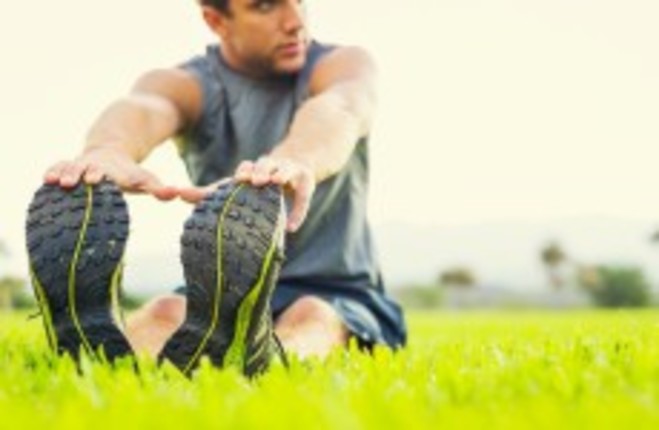HERE IS A test. It’s not a hard one, or a long one, but an important one. But just be prepared to fail it, okay?
Stand up, face your office chair and bring your knees very close to the chair itself – if the chair has wheels you’re in real trouble. Now, very simply, squat down and try your best NOT to move or even touch the chair. You failed, didn’t you? Most of us do, and the reason for that is, ironically, that chair itself.
Let’s rewind a little. Your glutes are three muscles combined, namely gluteus maximus, gluteus medius and gluteus minimus. They are even more commonly known as your ass, or buttocks to the more sensitive types. The more sitting we do the tighter a muscle group called the hip flexors become, while the glutes (behind the hips) become long and weak. It’s like any muscle, use it, or lose it.
Weak or inhibited gluteal muscles can result in overactive hamstrings and be the reason for low back pain, tight iliotibial bands (ITB syndrome) and patello-femoral pain (runner’s knee).
So? So, without a strong gluteus medius to align the femur, knee and ankle, you are likely to over pronate your feet, which can lead to plantar fasciitis (heel pain), achilles tendinitis and the very common running injury, shin splints.
It’s for these reasons that it’s absolutely vital to incorporate training of the glute muscles into your weekly exercise routine. The good news is that the exercises are many, not so laborious and the effects can be felt immediately.
Here are four exercises you’ll feel the benefits from straight away…
1) Bridge
Not the bridge most of us are familiar with and you’ll be glad to hear this version is much easier. Lying with your back on the floor, hands by your side and feet firmly planted, raise your hips to the ceiling – engaging the core muscles. Careful not to allow your knees spread, and also very important that you really clench your glute muscles, holding for 30 seconds. Repeat this three times.
2) Lunge
Stand tall and engage you core muscles. Now take one long step out in front with your left leg, plating the foot into the ground – making sure the left ankle is directly below the left knee. Hold for 30 seconds and return to the standing position, alternating legs. Repeat three times.
3) Squat
Don’t be discouraged from having another go, even if your effort earlier was shameful. The key here is to keep your knee over your ankle as best you can – don’t be pushing your knee beyond it. Imagine you are sitting right back into a chair – but careful not to topple over backwards. When you are as low as you can go, hold the position for 30 seconds. Really engage your core and glute muscles while keeping your feet firmly planted on the floor.
4) Glute kick
Get onto all fours, head facing forward. Now, raise your left leg and bring your thigh parallel to the floor, shin perpendicular to the floor and the sole of your foot parallel to the floor also. Hold this position and activate your core muscles. Now, give your raised leg another ‘lift’ but keep your hips still. Hold this for 30 second and squeeze your left buttock. Return to the start, repeating three times. Switch legs and do the same.
In summary
1. Your glutes are the collective name for three major muscles that make up the buttocks.
2. They become weak if not used.
3. If unused they can result in poor athletic performance and lead to a number of injuries and discomfort, particularly in the knees, hips and ankles.
4. Sitting down for long periods is a common reason why people have poor glutes.
5. A lack of exercise is another reason for them becoming weak.
6. One way to see if they are weak is to stand opposite a chair and squat down. If your knees move forward beyond your ankles, yes is the answer.
7. Another way to test if they’re weak is sit on a table face down and try to lift one leg. If the knee flexes significantly or there is much ‘dipping’ of your lower spine, weak glutes are the likely answer.
8. 5-10 minutes twice a week would really improve it.
9. Twerking probably wont.
